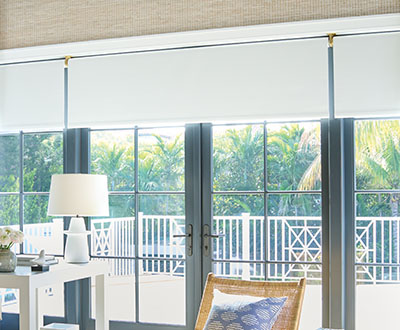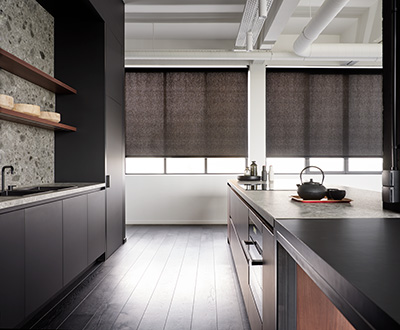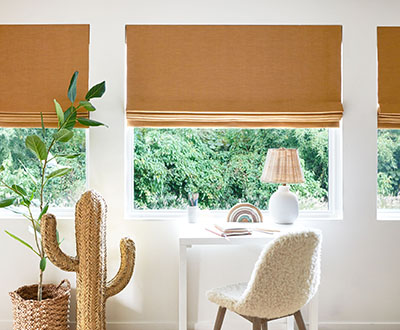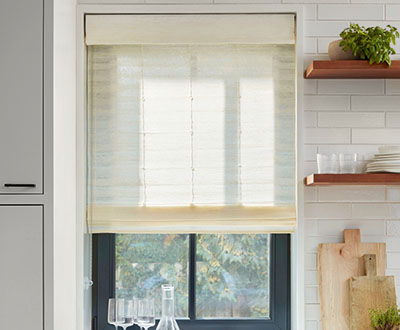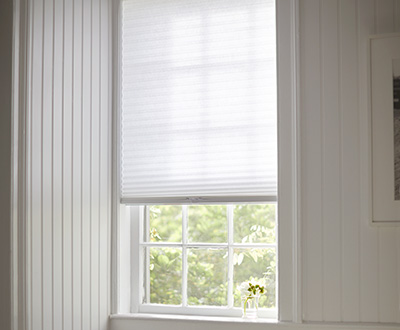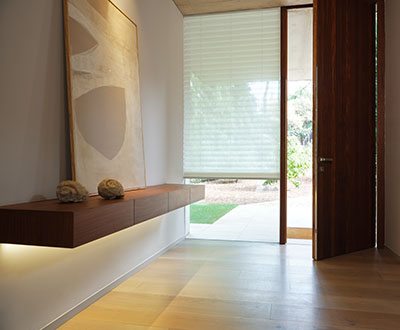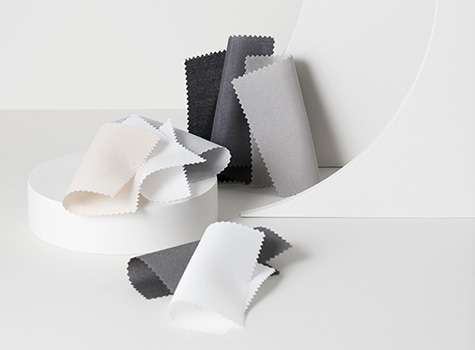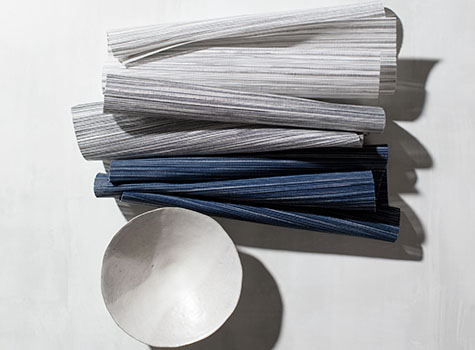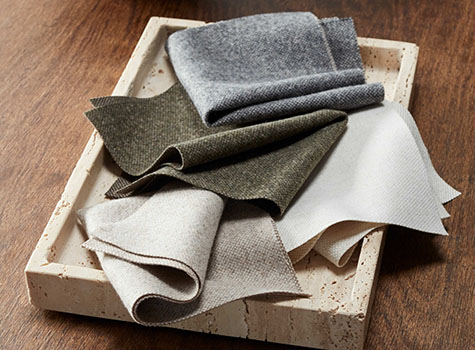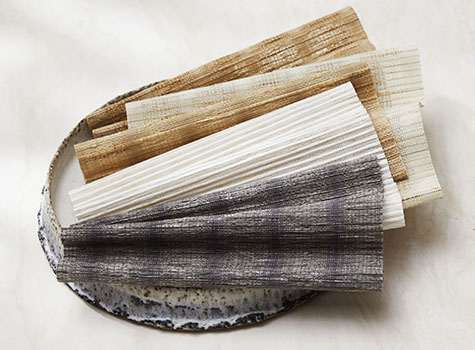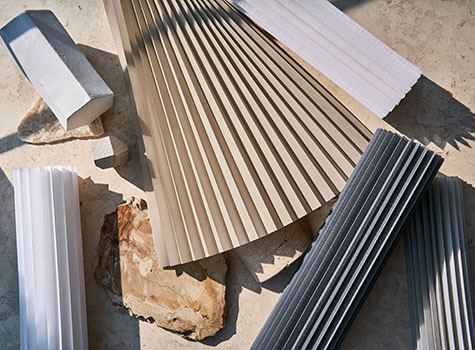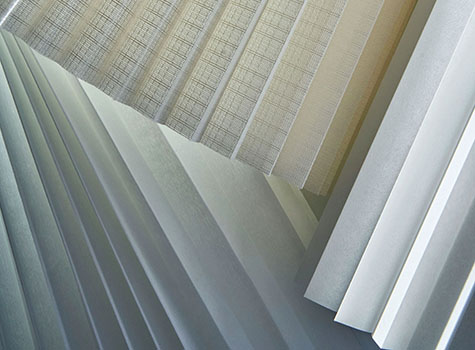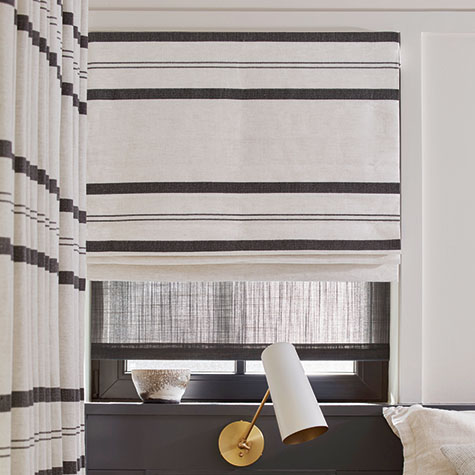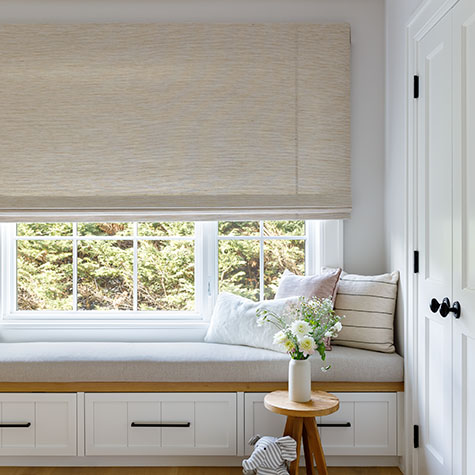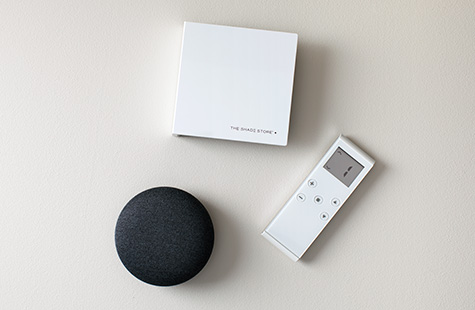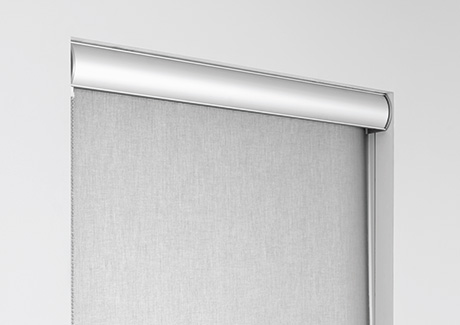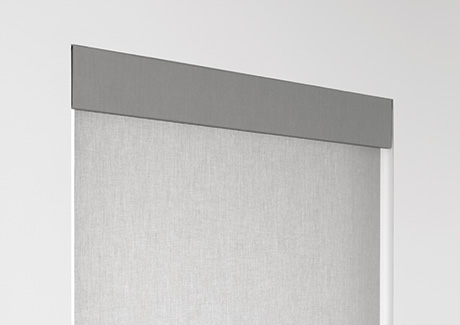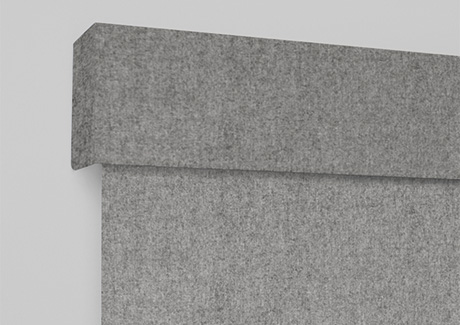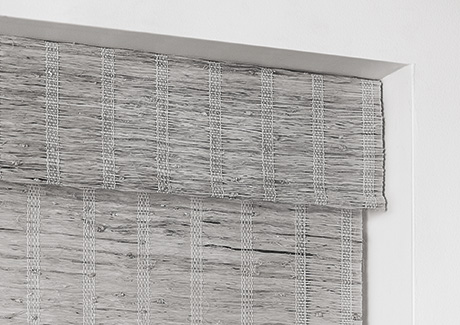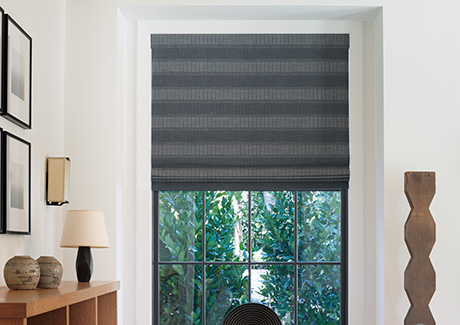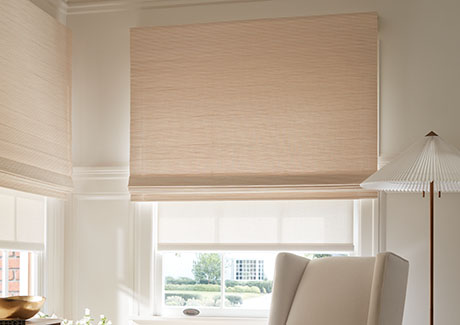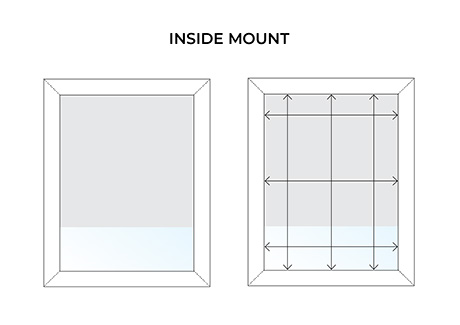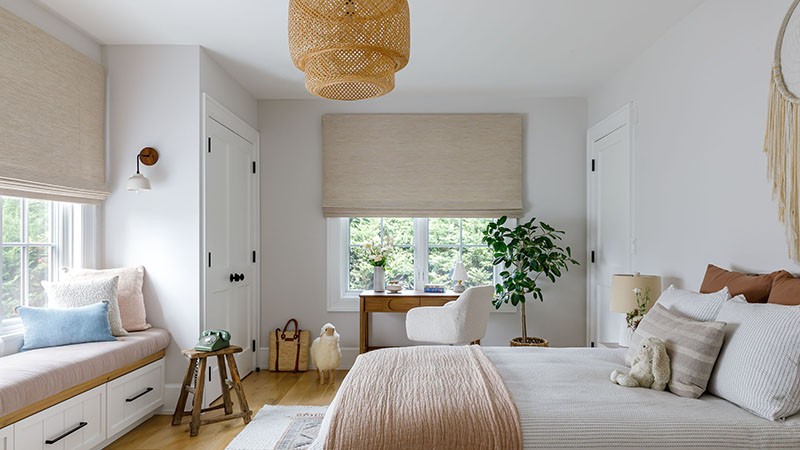BUYING GUIDE:Window Shades
Window shades are a popular, versatile option for many types of windows in homes ranging from modern to traditional. Shades come in a variety of styles, each with their own unique benefits and customizations. But how do you know which one is right for your space? And where do you even begin?
That’s where we come in. With this buying guide for custom window shades, you’ll learn everything you need to know from the different styles of shades to material selections, control types and more, all so you can pick the right one to suit your style and needs.
What Are Shades?
Shades are a type of window treatment that you move up and down to cover or reveal your window. Shades come in a wide variety of styles from sleek Roller Shades to elegant Roman Shades and energy-efficient Cellular Shades. Each style offers a wide range of material options that vary in terms of light and privacy control as well as color and pattern. Plus, many window shades offer several control types to choose from, including cordless options and motorization.
Now that you know what shades are and how they compare to blinds, dive into all the details from benefits of window shades to types, customization options and more.
In this article
Why Choose Window Shades?
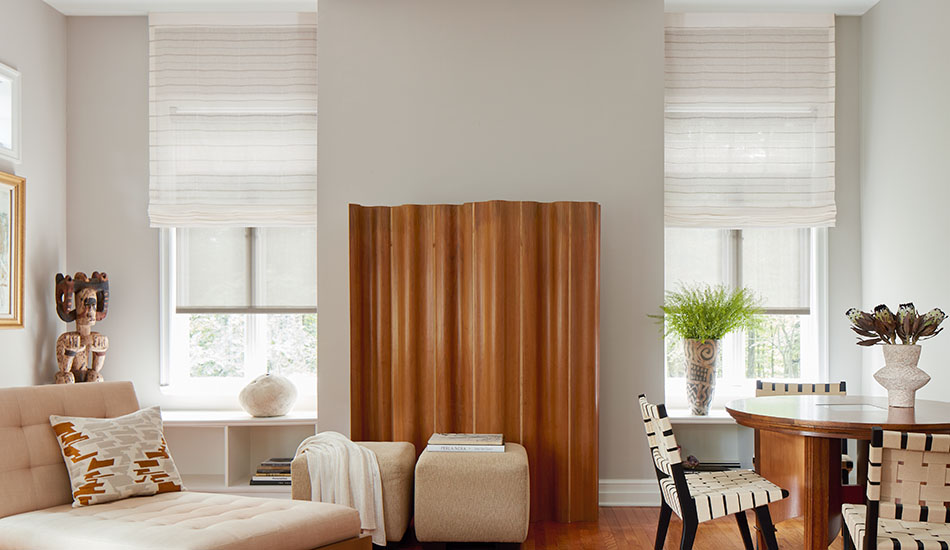
Regardless of the style you choose, there are universal benefits to choosing window shades, including:
- Six types of shades to choose from, each with their own styles and customizations to create the right look with the right functionality.
- Hundreds of fabric and material optionsbetween the different styles so you can find the perfect complement to your existing interior.
- Control types to suit your functionality needs, including cordless and motorization options.
- Lots of style versatility, with designs ranging from sleek and modern to luxurious and elegant.
- Install flexibility for most window shades, as many can be mounted either inside the window frame (inside mount) or outside the frame (outside mount).
Types of Window Shades
Within the category of window shades, there are several styles to choose from that vary in aesthetics and functionality. Learn more about each style of shade to determine which is the right fit for your style and functional needs.
Customizations for Shades
Now that you know the different types of window shades, you’re ready to explore some of your customization options. These customizations may vary based on the type of shade you choose. For instance, materials are categorized by the type of shade because there’s very little overlap of materials between shade types. Additionally, each control type may only be compatible with certain types and styles of window shades. Learn more about your customization options so you can choose the right shade and customizations for the perfect look and functionality.
Material Options for Shades
Materials for window shades vary between the different types of window shades. All types of shades offer versatile neutral tones, but for pattern and color variety, Roller Shades and Roman Shades are your best bet. Find out more about your material options based on type of shade.
CUSTOMIZE
YOUR DESIGN
Get started customizing your window shades. Choose the style you like, pick a material and select more customizations like control type, lining and more to create the perfect shade for every room in your home. START CUSTOMIZING
Linings for Roman Shades & Woven Wood Shades
Lining refers to extra material sewn to the back of your shade. Linings are only available for Roman Shades and three styles of Woven Wood Shades. They are free to add when you buy your window shades from The Shade Store.
Each type of lining has its own unique benefits, but all linings also share common benefits, including:
- Gives your shade fuller body and weight for a more structured, tailored look.
- Protects your shade material from the harsh rays of the sun, which can cause fading and deterioration, especially for natural fabrics and woven fibers.
- Provides added privacy and better light control for your peace of mind.
- Contributes to better insulation, from heat and cold.
Now that you know the common benefits of lining, learn about your lining options for both Roman Shades and certain styles of Woven Wood Shades to determine which might be the right choice for you.
Control Types
Control type refers to the control mechanism with which you lift and lower your shade. Window shades have several control type options, but not every type or style of shade is compatible with every control type. Learn about your control options and which shade styles are compatible with each to help you decide on the right choice for your needs.
Basic Control Type: Continuous Loop
Basic control for your shade is continuous loop. All shades are compatible with continuous loop and it typically comes standard with your shade at no extra charge.
- Continuous Loop – This control type features a looped chain attached to the headrail and held taut by a tension device fastened to the wall or window frame next to your shade. To light and lower your shade, simply pull on one side of the chain. Available for all types of window shades.
Cordless
Cordless control allows you to lift and lower your shade without any cords or chains thanks to a tension device in the tube or headrail. To lift and lower cordless window shades, you’ll need to pull the shade gently down and toward you to release the lock and then adjust the shade to your desired height. Or, in the case of Cellular Shades, simply grab the bottom bar and pull it down or push it up.
Cordless control is available for:
- Roller Shades (excluding specialty Roller Shades)
- Solar Shades
- Flat Roman Shades
- Cascade Roman Shades
- All styles of Woven Wood Shades
- Cellular Shades
Motorized
Motorization allows you to adjust your window shades effortlessly. The specific controls available to you will depend on which motorization system you choose. However, most systems, including our proprietary motors, come with a remote. Some systems can be paired with an app on your smartphone or tablet to control your window shades. Others still can be paired with a smart home device like Google Nest or Amazon Alexa, allowing you to control your shade with the sound of your voice.
*To pair your motor with a smart device, you’ll need our wireless link which converts the digital signal from your smart device into a radio signal that the motor understands.
Valances
An additional customization for window shades is valances. Valances can be soft or hard structures, depending on the type of shade you choose. In comparison to cornices, which are similar structures, valances are typically shorter in height and shallower in depth. Cornices can be added to any shade and can be designed however you envision them, but they are most commonly used with Drapery. When it comes to valances, there are certain styles that are compatible with different types of shades. Learn more about your valance options based on shade type:
Roller & Solar Shade Valance Options
Roman Shade & Woven Wood Shade Valance Options
discover
curated designs
Explore our Photo Gallery for inspirational ideas to fuel your creativity for your own window shades design. VIEW THE GALLERY
Cost Considerations for Shades
Now that you have an overview of all the types of window shades and their customization options, you’re ready to consider cost. The following chart shows a cost comparison of each type of shade at its starting price — meaning with basic customizations — without the additional price of upgrades or installation.
| Type of Window Shade | Starting Price | |
|---|---|---|
| Roller Shades | 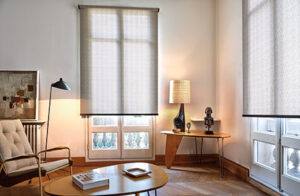 | $$ |
| Solar Shades | 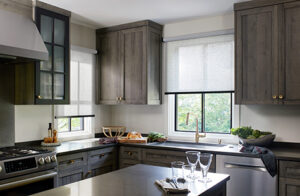 | $$ |
| Roman Shades | 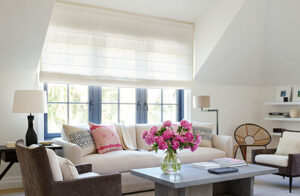 | $$$ |
| Woven Wood Shades | 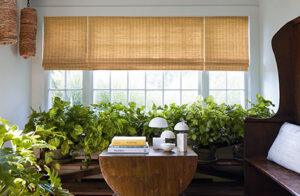 | $$$ |
| Cellular Shades | 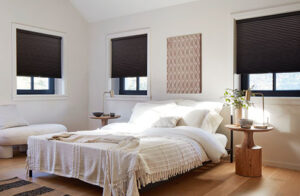 | $$$ |
| Pleated Shades | 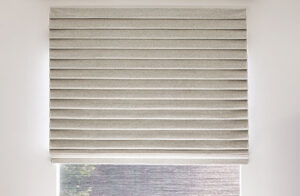 | $ - $$$$ |
GET A QUICK
PRICE QUOTE
Simply enter your measurements and get estimated pricing for different product categories and price groups. QUICK PRICE QUOTE
While having a sense of the basic starting price points for window shades is important, it’s also essential to understand how different customization factors affect your upfront cost.
Factors That Affect Upfront Costs
- Shade type – Each shade type has a different starting price point based on the general materials it takes to assemble the structure. The quality of the basic material and amount of material it requires to achieve the right look also affects cost.
- Size – The larger your shade, the more material is required for it, and the higher the price will be.
- Material – Your material selection will affect your final price as some materials, like exclusive design fabrics, will have a higher price than standard materials.
- Control type – As a basic control, continuous loop doesn’t cost extra as the price is baked into the starting price of the shade. However, upgraded controls like cordless and motorization will have an additional cost, with motorization being the most expensive option.
Best Applications for Each Type of Shade
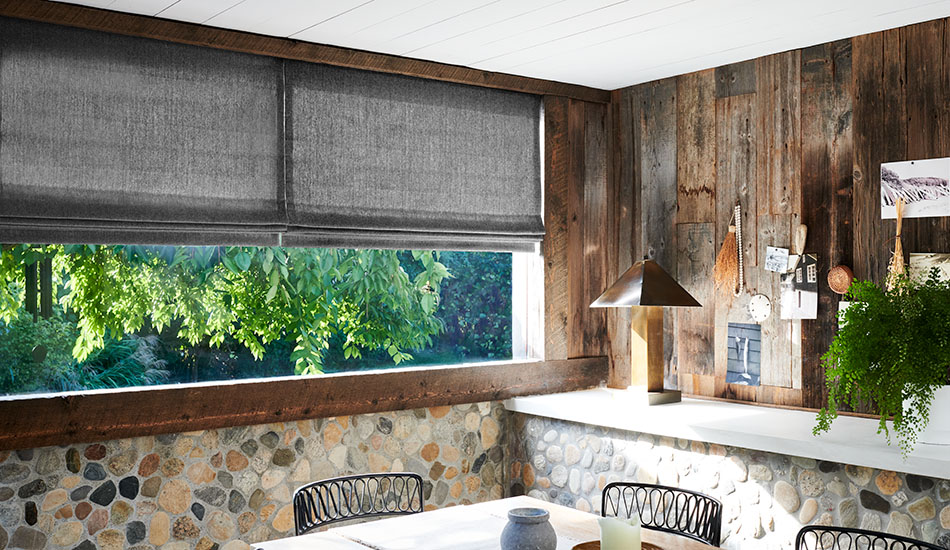
As you’ve learned, each type of shade offers its own unique characteristics that make it better or less than ideal for different applications. Consider different types of applications, such as inside- or outside-mounted shades and different rooms in your home, to confirm which window shades are the best choice for your particular situation.
Inside & Outside Mount
Inside vs outside mount refers to where your shade is fastened in relation to the window frame.
When it comes to inside- or outside-mount applications, all types of window shades work great in either one. However, make sure you pay attention to the depth requirement for each type of window shade to ensure it can be securely mounted in your window. Depth requirement refers to how deep your window box is when measured from the glass to the edge of your window frame. For most window shades, you’ll need a depth requirement of at least ¾-inch for a secure inside mount and around 2 inches for a flush inside mount. As long as your window box is deep enough to accommodate an inside mount for your chosen type of shade, the choice is purely based on your preference.
Rooms Best Suited to Each Type of Shade
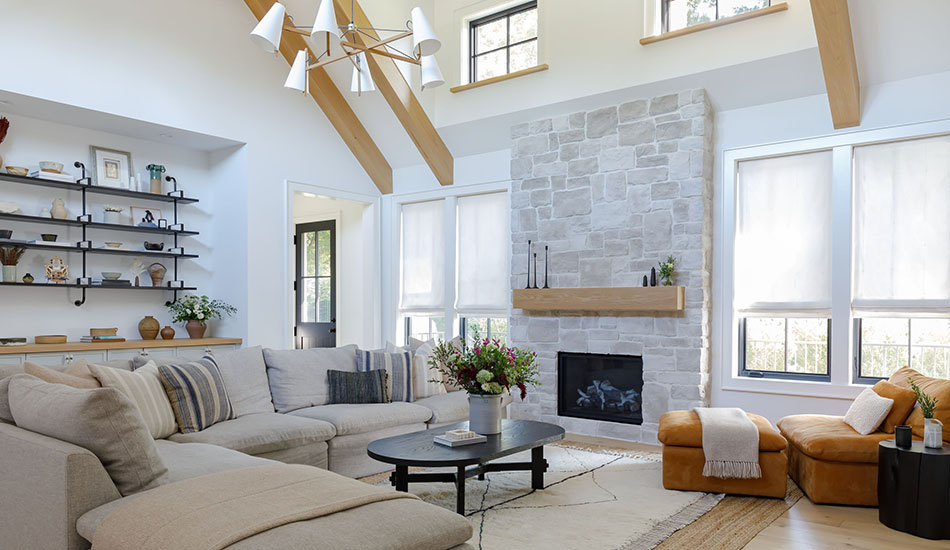
In addition to inside- and outside-mount applications, it’s also important to think about the room you’re installing your shade. Different types of shade may fare better in certain rooms than others. For instance, rooms with lots of moisture and humidity like bathrooms and kitchens will do best with a shade made from a hardy synthetic material, like Roller or Solar Shades. Find out more about the best room applications for each type of shade.
How to Measure for Shades: Best Practices
With all the information you have regarding the different types of window shades, you likely have an idea as to which will work best for your home. To order window shades, you’ll need to learn how to measure for your ordering length and width. Luckily, measuring for shades is similar regardless of the type of shade you choose. These instructions are best practices that work for most shades. However, it’s always best to view the specific install instructions for your chosen type of shade to get the best measure advice.
For Roller and Solar Shades, take three measurements for length, but only one measurement for width: At the top of your frame, since that’s where Roller and Solar Shades are widest.
Measuring for Outside Mount
The process for measuring for an outside-mount application is very simple. Plus, it’s universal between all types of window shades.
Step 1: To measure width, measure the entire distance you want your shade to cover beyond the window frame on either side, making sure the shade extends the same distance on each side of the frame.
Step 2: Measure for length start at the point above your window frame where you want the headrail to be installed. If you’re installing it on the ceiling, start at the ceiling. Then measure down just past the window frame. This is your ordering length, based on how far you want your shade to extend above the window frame.
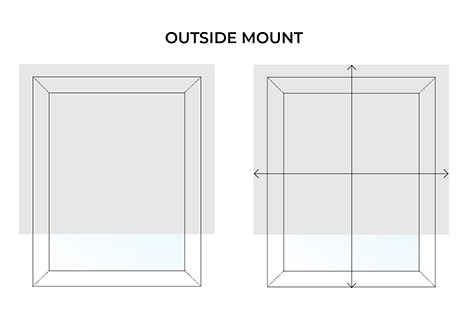
Best Practices for Shades Installation
Now that you know how to measure length and width for your window shades, you’re likely wondering whether or not you can DIY installation. The good news is that most shades are relatively simple and straightforward to install, but of course the actual difficulty will depend on your abilities and level of comfort with the project. These installation instructions are general guidelines with best practices for most shades and will help you decide if a DIY install is right for you.
Remember: Always read through your shade’s installation instructions before starting your project.
Best Practices for Installation
The installation instructions are a simplified version that correspond to most shade installations. For full instructions, be sure to read the install guide for your chosen shade.
- Step 1: Gather tools. You’ll typically need a stepladder, pencil, tape measure, level, drill and screwdriver, but check your shade’s specific install instructions for an exact list.
- Step 2: Mark where your brackets and headrail, or tube in the case of Roller and Solar shades, will be fastened.
- Step 3: Install the brackets in the place marked in Step 2 with the appropriate tools as indicated in the installation guide for your chosen shades and then mount the headrail, or tube for Roller and Solar Shades.
Cleaning & Maintenance
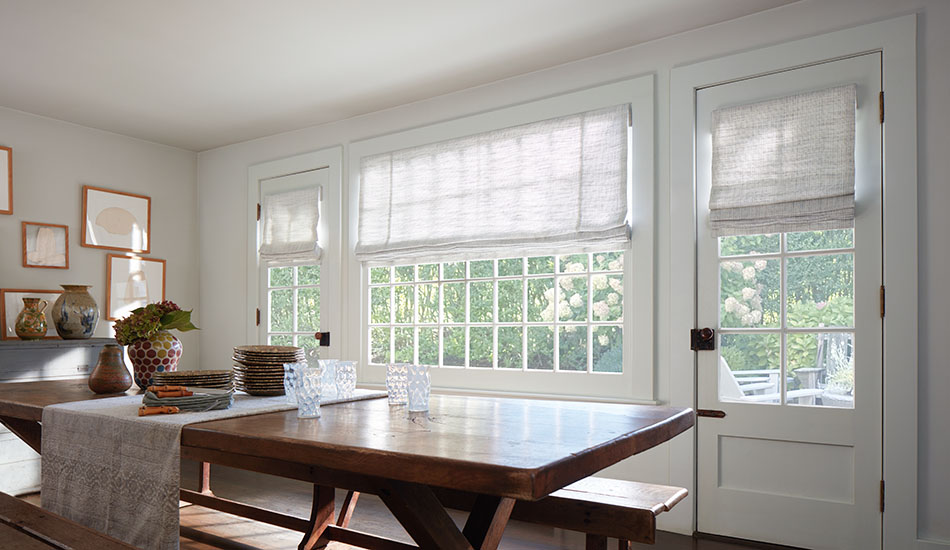
To ensure your window shades look their best and maintain optimal functionality, it’s best to keep a regular maintenance schedule. Regardless of the type of shade or material chosen, you can follow the general cleaning guidelines:
Regularly clean them using a low-suction, handheld vacuum, or dust them with a soft, clean cloth or feather duster.
For deep cleaning of embedded dust and dirt or a stain, follow these instructions based on material type:
Cleaning Natural Materials
Natural materials are more likely to be sensitive to cleaning solutions, so if you want to clean your shade at home, test the cleaning solution on a swatch first to ensure it doesn’t ruin the material. However, due to the delicate nature of natural materials, we highly recommend contacting a local window treatment cleaning specialist who can likely clean your shades without taking them down. If you don’t have a window treatment cleaning specialist in your area, take a swatch to your local dry cleaner to discuss cleaning with them.
Cleaning Synthetic Materials
Cleaning synthetic materials can be done with the following steps based on the type of shade.
For Roller and Solar Shades:
For traditional Roller Shades (excluding specialty Roller Shades) and Solar Shades, you may be able to remove dirt and stains with the Mr. Clean Magic Eraser.
For Roman Shades with Sunbrella fabric:
For Roman Shades made with performance Sunbrella fabric, you can follow these steps for cleaning dirt and stains:
- Blot (don’t rub) liquid spills with a clean, dry cloth. For oil-based spills, apply an absorbent such as corn starch, then remove with a straight edge.
- Spray on a mild cleaning solution of soap (such as Dawn or Woolite) and water.
- Rinse the fabric thoroughly to remove all soap residue.
- Leave your shade to air dry.
If these efforts do not remove the stain or dirt from your shade, contact a local window treatment cleaning specialist or dry cleaner.
Frequently Asked Questions About Shades
Review the following frequently asked questions for a deeper understanding of window shades.
